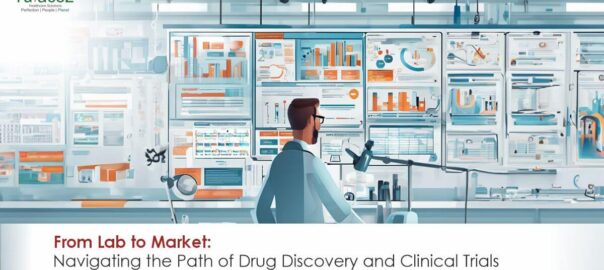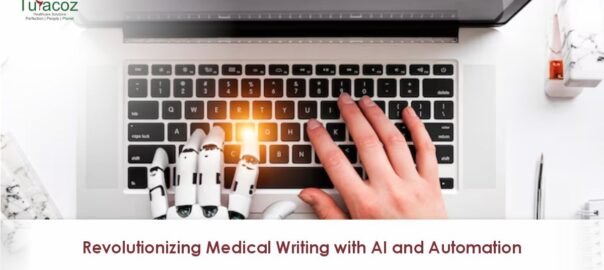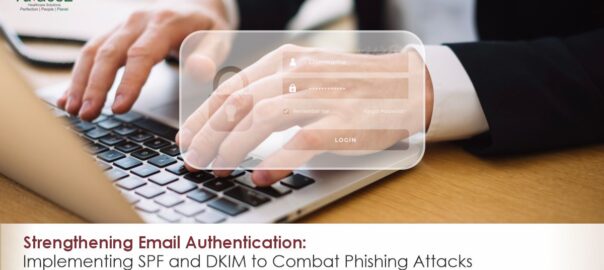Developing new drugs and medical treatments is a testament to the relentless pursuit of innovation and improving human health through clinical research. The journey of developing new therapeutic agents from the laboratory to the patient’s bedside is a multifaceted, fascinating, and complex process. It involves a series of systematic steps designed to ensure the safety, efficacy, and quality of new treatments. In this blog, we will explore the nuanced stages of drug development, the challenges faced, and the pivotal role of clinical research in bringing transformative treatments to the forefront of medicine.
The Odyssey Begins: Discovery and Preclinical Research
The genesis of any new drug is rooted in a profound understanding of the disease it aims to treat. Scientists embark on a quest to identify potential targets for intervention, such as a protein or gene associated with a disease process. This phase is characterized by extensive laboratory research, including in vitro (test tube or cell culture) and in vivo (animal) studies, aimed at understanding the disease’s biology and identifying molecules that may influence these pathological pathways.
During preclinical research, the safety profile of the candidate drug is scrutinized. This involves evaluating its toxicity, pharmacokinetics (how the body absorbs, distributes, metabolizes, and excretes the drug), and pharmacodynamics (the drug’s effects on the body). These studies are critical for establishing the compound’s initial safety and efficacy profile, guiding the design of future clinical trials.
Click Here:- Mastering the Art of Writing a Compelling Scientific Conference Report
Transitioning to Humans: Clinical Trials
Clinical research is the cornerstone of drug development, providing empirical evidence to determine whether a new drug is safe and effective for human use. This phase is meticulously structured into several stages of clinical trials, each designed to answer specific research questions:
- Phase I: Often referred to as “first-in-human” studies, these trials evaluate a drug’s safety in a small group of healthy volunteers or patients. The primary focus is understanding the drug’s safety profile, side effects, and determining the appropriate dosage range.
- Phase II: This phase aims to provide preliminary data on the drug’s effectiveness in a larger group of patients while continuing to monitor its safety. Phase II trials are often the first to demonstrate the drug’s therapeutic potential in the targeted disease.
- Phase III: These are large-scale trials designed to confirm the drug’s effectiveness, monitor side effects, compare it to commonly used treatments, and collect information to ensure safe usage. Successful completion of Phase III is crucial for regulatory approval.
- Phase IV: After the drug has been approved and marketed, these post-marketing studies gather additional information on its long-term effectiveness, side effects, and impact on a patient’s quality of life.

The journey towards regulatory approval is a pivotal phase in drug development, representing a rigorous evaluation process that drugs must successfully navigate before becoming available to patients. This process is overseen by regulatory authorities such as the U.S. Food and Drug Administration (FDA), the European Medicines Agency (EMA), the Central Drugs Standard Control Organisation (CDSCO), and others, depending on the geographical region. The primary goal is to ensure that new drugs are safe, effective, and manufactured to the highest quality standards.
Submission of New Drug Application (NDA)
The culmination of years of research is the submission of a New Drug Application (NDA) or its equivalent (e.g., Marketing Authorization Application in Europe). This comprehensive document encompasses all the data collected from preclinical and clinical research, detailing the drug’s pharmacokinetics, pharmacodynamics, manufacturing process, proposed labeling, and the data demonstrating its safety and efficacy.
Review Process
Once submitted, the NDA undergoes a stringent review process. This includes a thorough examination of the clinical trial data to assess the balance between the drug’s benefits and risks. Regulatory scientists and reviewers also evaluate the drug’s manufacturing process to ensure it can be produced consistently and to standard. In many cases, the review process involves advisory committees, composed of experts and patient representatives who provide additional perspectives on the drug’s risk-benefit analysis.
The review timeline can vary significantly depending on the regulatory pathway. For instance, drugs that fulfill an unmet medical need or are a significant improvement over existing therapies may qualify for expedited review processes like Fast Track or Priority Review in the United States, which can shorten the timeline for approval.
Challenges in the Regulatory Process
Navigating the regulatory landscape is often complex and unpredictable. One of the primary challenges is the evolving regulatory standards and guidelines, which may require additional studies or data, thereby extending the time and cost of development. Furthermore, clinical data interpretation can be subjective, and what might be sufficient for one regulatory body might not satisfy another, complicating global drug development strategies.
Challenges and Considerations
Drug development is fraught with challenges, from the high attrition rates in early-stage research to the logistical and ethical complexities of conducting clinical trials. The financial stakes are immense, with the cost of bringing a new drug to market often reaching billions of dollars, considering both successful developments and the costs of those that fail.
Moreover, the landscape of clinical research is evolving, with increasing emphasis on personalized medicine, patient-centered outcomes, and the integration of digital health technologies. These advancements promise to refine the drug development process, potentially making it more efficient and tailored to individual patient needs.
The Role of Collaboration
Collaboration across the pharmaceutical industry, academia, regulatory bodies, and patient advocacy groups is pivotal in overcoming the hurdles of drug development. Partnerships can facilitate the sharing of resources, expertise, and data, accelerating innovation and ensuring that promising therapies reach patients sooner.
Conclusion
The journey of drug development and clinical research is a remarkable endeavor that encapsulates the hopes of patients, the dedication of scientists, and the collective will to push the boundaries of medicine. While the path is fraught with challenges, each successful step forward represents a potential leap in improving human health. As we navigate this complex landscape, the convergence of scientific rigor, regulatory wisdom, and technological innovation promises to transform the future of therapy and patient care.
Navigating the labyrinth of drug development and clinical research requires patience, perseverance, and a deep commitment to advancing medical science. It’s a journey defined not just by the potential for profit but by the profound impact on human life and well-being. As we look to the future, it’s clear that our collective efforts in this arena are not just about creating new medicines but about redefining what’s possible in human health.
For those interested in taking their first steps into regulatory writing or enhancing their expertise to meet the challenges of omnichannel communication in healthcare, we invite you to explore the opportunities available through our training programs. Contact us at [email protected] to learn how you can join the ranks of medical writers making a significant impact in healthcare communication. Together, let’s shape a future where accurate, accessible, and actionable health information reaches every corner of the globe, empowering individuals and transforming healthcare outcomes.










